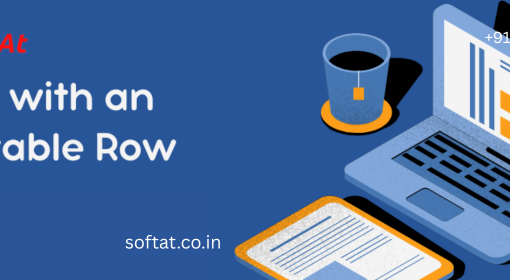In the fast-paced world of technology, where agility and adaptability reign supreme, traditional development methodologies often struggle to keep up. Enter Rapid Application Development (RAD), a paradigm that prioritizes speed without compromising quality. This article dives into the dynamics of RAD, exploring its principles, advantages, misconceptions, frameworks, implementation strategies, challenges, and the human touch that makes it thrive.
1. Introduction to Rapid Application Development
Digital transformation demands agility, and Rapid Application Development (RAD) emerges as the answer to the ever-accelerating pace of change. In this article, we unravel the facets of RAD, examining its principles, dispelling myths, exploring frameworks, and understanding its implementation in the context of today’s dynamic development landscape.
2. Understanding Rapid Application Development (RAD)
2.1 The Essence of Speed in Development
RAD prioritizes rapid prototyping and quick feedback loops, allowing for swift development cycles. It emphasizes the importance of delivering a minimum viable product (MVP) promptly.
2.2 Key Principles of Rapid Application Development
RAD is guided by principles such as user involvement, iterative development, and flexibility in responding to changes. It places a premium on collaboration between cross-functional teams.
3. Advantages of Rapid Application Development
3.1 Speed to Market
The primary advantage of RAD is its unparalleled speed. Rapid development cycles enable businesses to bring products to market swiftly, gaining a competitive edge.
3.2 Adaptability to Changes
RAD’s iterative approach allows for easy adaptation to changes in requirements. This flexibility is crucial in the ever-evolving landscape of technology.
3.3 Enhanced Collaboration
The collaborative nature of RAD fosters effective communication between developers, designers, and stakeholders, ensuring a shared vision and faster decision-making.
4. Common Misconceptions About Rapid Application Development
4.1 Compromised Quality
Contrary to a common misconception, RAD doesn’t compromise on quality. The iterative testing and feedback loops contribute to the delivery of robust applications.
4.2 Limited Scalability
While initially designed for smaller projects, RAD has evolved to handle larger, more complex applications, making it a viable choice for various scenarios.
4.3 Applicability to All Projects
RAD is not a one-size-fits-all solution. It thrives in projects where rapid development and flexibility are paramount but may not be suitable for projects with stringent regulatory requirements.
5. The Rapid Application Development Frameworks in Action
5.1 OutSystems
OutSystems offers a low-code platform, empowering organizations to develop applications rapidly with minimal hand-coding.
5.2 Microsoft Power Apps
Microsoft Power Apps allows users to create custom apps with minimal code, facilitating rapid development and deployment.
5.3 Mendix
Mendix provides a low-code platform that enables the development of applications at a swift pace, emphasizing collaboration and innovation.
6. Implementing Rapid Application Development in Your Development Process
6.1 Identifying Appropriate Projects
Choosing the right projects for RAD is crucial. Projects with changing requirements and a need for quick time-to-market are ideal candidates.
6.2 Building Cross-Functional Teams
Assembling teams with diverse skill sets enhances collaboration. Cross-functional teams can quickly address different aspects of development.
6.3 Iterative Prototyping
RAD relies on iterative prototyping. Creating and refining prototypes in quick cycles ensures that the final product meets user expectations.
7. Challenges and Mitigations in Rapid Application Development
7.1 Balancing Speed and Quality
Maintaining a balance between speed and quality is a challenge. Rigorous testing and continuous integration can mitigate this risk.
7.2 Managing Changes Effectively
Handling changes during development requires a robust change management process to avoid disruptions to the project timeline.
7.3 Ensuring Security Measures
The fast-paced nature of RAD can sometimes overlook security concerns. Integrating security measures into the development process is crucial.
8. Case Studies: Success Stories with Rapid Application Development
8.1 Dropbox: Rapid Evolution to Market Leader
Explore how Dropbox rapidly evolved from a simple file-sharing solution to a market leader, showcasing the power of RAD in scalability.
8.2 Google Apps: Transforming Collaboration
Discover how Google Apps transformed collaboration with its suite of rapidly developed and continuously improved applications.
8.3 Slack: Revolutionizing Team Communication
Learn how Slack revolutionized team communication with its intuitive interface and collaboration features developed through RAD.
9. Future Trends in Rapid Application Development
9.1 Low-Code and No-Code Evolution
The evolution of low-code and no-code platforms is a future trend in RAD, democratizing app development and expanding accessibility.
9.2 AI Integration for Intelligent Development
Artificial Intelligence (AI) integration is set to play a significant role in RAD, enabling intelligent automation and enhancing development efficiency.
9.3 Increased Mobile Development Focus
The focus on mobile development within RAD is expected to grow, aligning with the rising demand for mobile-centric solutions.
10. The Human Touch in Rapid Application Development
10.1 User-Centric Prototyping
Despite the speed of RAD, a user-centric approach is crucial. Prototyping with the end-user in mind ensures applications meet their needs.
10.2 Continuous User Feedback
RAD’s iterative nature allows for continuous user feedback. This engagement ensures that the final product aligns with user expectations.
10.3 Collaborative Development Environment
Collaboration remains at the heart of RAD. A collaborative development environment fosters creativity, innovation, and effective problem-solving.
11. SEO Considerations for Rapidly Developed Apps
11.1 SEO Challenges in Rapid Development
Rapidly developed apps may face SEO challenges due to dynamically changing content. Addressing these challenges is essential for visibility.
11.2 Best Practices for SEO in Rapid Application Development
Implementing clean and SEO-friendly code, optimizing images, and ensuring mobile responsiveness are crucial SEO best practices in RAD.
12. Conclusion
Building a web application is not just about coding and deploying—it’s a holistic journey. From understanding your audience to continuous improvement, each step contributes to the success of your digital endeavor. By following this comprehensive guide, you are equipped to navigate the challenges, leverage opportunities, and build a web application that stands the test of time.
FAQs
- What is the first step in building a web application?
- The first step is defining your web application by understanding your target audience and clarifying your purpose and goals.
- How important is user feedback in web application development?
- User feedback is crucial. It helps you understand user experiences, identify areas for improvement, and guide iterative development.
- What is SSL encryption, and why is it important for web applications?
- SSL encryption secures data transmission between a user’s browser and the server. It is vital for protecting sensitive information and establishing trust.
- How can I ensure my web application is SEO-friendly?
- Optimize URL structures, create sitemaps for search engines, and focus on quality content to ensure SEO friendliness.
- What are some future trends in web application development?
- Progressive Web Apps (PWAs), artificial intelligence integration, and voice search optimization are emerging trends shaping the future of web applications.
You may be interested in:
The Future of Machines: Trends and Predictions
Why does Papertyper.net have to be your next go-to website for studying?





